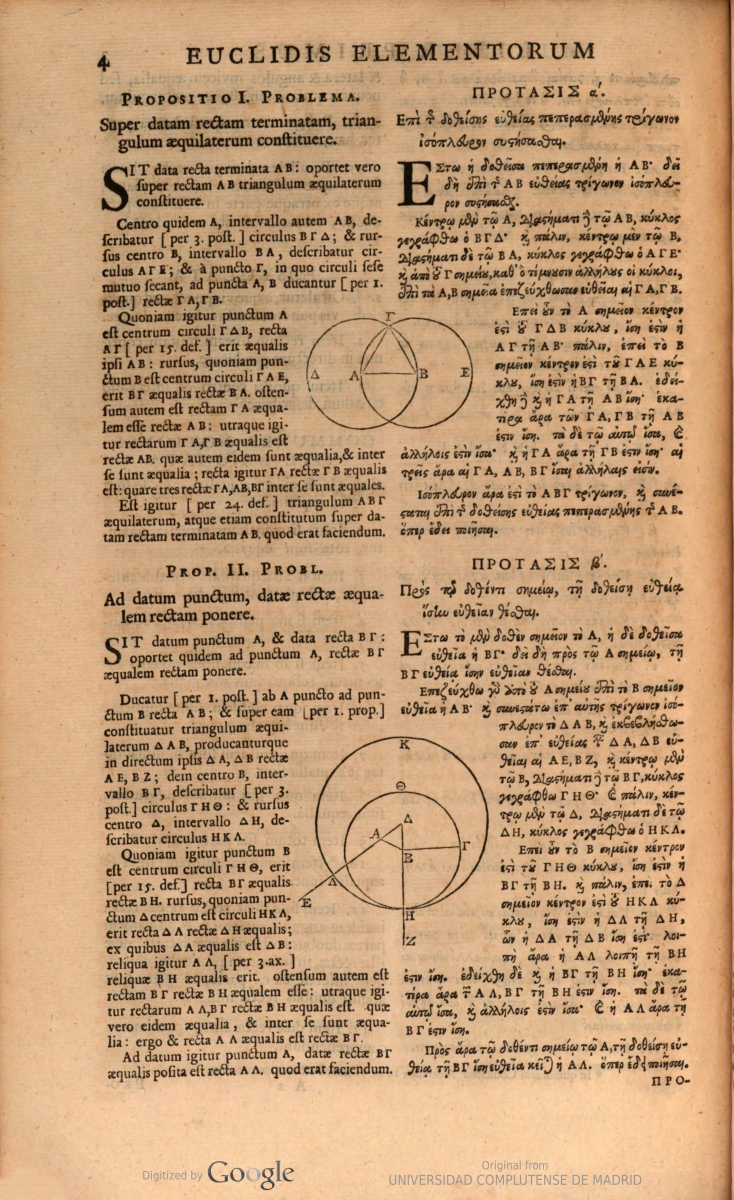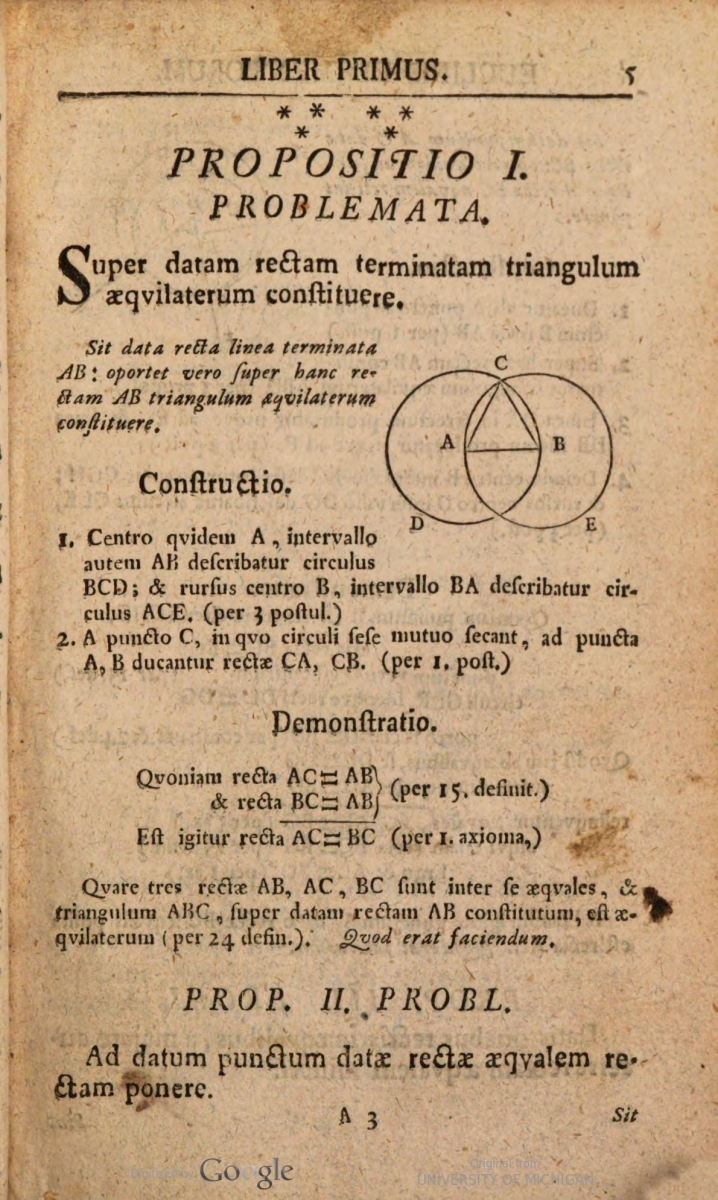- About MAA
- Membership
- MAA Publications
- Periodicals
- Blogs
- MAA Book Series
- MAA Press (an imprint of the AMS)
- MAA Notes
- MAA Reviews
- Mathematical Communication
- Information for Libraries
- Author Resources
- Advertise with MAA
- Meetings
- Competitions
- Programs
- Communities
- MAA Sections
- SIGMAA
- MAA Connect
- Students
- MAA Awards
- Awards Booklets
- Writing Awards
- Teaching Awards
- Service Awards
- Research Awards
- Lecture Awards
- Putnam Competition Individual and Team Winners
- D. E. Shaw Group AMC 8 Awards & Certificates
- Maryam Mirzakhani AMC 10 A Awards & Certificates
- Two Sigma AMC 10 B Awards & Certificates
- Jane Street AMC 12 A Awards & Certificates
- Akamai AMC 12 B Awards & Certificates
- High School Teachers
- News
You are here
E. G. Ziegenbalg’s Danish Translation of Euclid’s Elements: The Influence of Ramus
Ramus was professor of mathematics at the University of Copenhagen from 1722 to his death in 1769. As discussed above, he published Latin editions of the Elements in 1737 and 1740. The latter, which was meant for school use, appeared in a second edition in 1756. According to Christensen [1895, 40], the 1740 edition followed the text and arrangement of the Oxford edition [Gregory 1703] without deviation, but Ramus made use of different fonts, spacing, and headings to set up the text in a manner beneficial for a textbook:
- First the proposition is stated.
- Next the proposition is restated with reference to a figure.
- Then, under the heading constructio, the diagram for the proof is constructed, if applicable.
- Finally, under the heading demonstratio, the proof of the proposition is given.
The typography and formatting appear to be unusual for the time, and possibly also for the location, but further research is needed to determine whether this distinctive style is due to Ramus or predates him.
The formatting style is followed in Ramus’ 1756 edition as well. Figure 6 contrasts Proposition 1.1 in Gregory [1703] and Ramus [1756]. As can be seen, the text in Ramus’ 1756 edition differs from Gregory’s text, suggesting Ramus made changes from his first edition, since Christensen [1895, 40] stated that, even though Ramus changed the formatting style, there were no differences between the texts of Gregory [1703] and Ramus [1740].
Figure 6. Proposition 1.1 in Gregory 1703 (left, HathiTrust) and Ramus 1756 (right, HathiTrust).
The praise of Euclid in Ramus’ introduction to Ziegenbalg’s Euclid translation is even more emphatic than Ziegenbalg’s own praise in his preface (see the next page):
Der have adskillige Mathematici og Mathematum studiosi foretaget sig at ville vise os en kortere Maade at lære Mathematiken end af disse Euclidis Elementer: Hvad de dermed have udrettet, kand her ikke tales meget om: thi med faa Ord at sige, da ere Euclidis Elementer det ældste og eeneste Document, hvorpaa ald Mathematik er grundet, og de beholde nok den Priis og Berømmelse, som de hidindtil udi To Tusinde Aar have haft.
Several mathematicians and students of mathematics have attempted to show us a shorter way to learn mathematics than from these Euclid’s Elements. Not much can be said here about what they accomplished thereby. To put it briefly, Euclid’s Elements are the oldest and only document upon which all mathematics is founded, and they will probably keep the praise and fame, which they have had up to today for two thousand years.
Ramus noted the practical value of the Elements for military and civilian purposes, emphasizing its importance for engineers, sailors, master builders, opticians, and other skilled professionals. The availability of a Danish translation of the Elements is essential, Ramus argued, for it allowed talented people to use the text without the need to devote time to learn Latin. He further noted the difficulties in preparing such a translation: the translator must not only master both Latin and geometry, but also be able to express the material in a clear and precise way in the Danish language. He praised Ziegenbalg’s translation and stated that Ziegenbalg had earned the fame of being the first to prepare a Danish translation of the Elements. In general, Christensen [1895, 41] notes that Ramus’ introduction does not contain anything not found in his Latin edition of the Elements.
Toke Lindegaard Knudsen (State University of New York at Oneonta), "E. G. Ziegenbalg’s Danish Translation of Euclid’s Elements: The Influence of Ramus," Convergence (October 2021)






